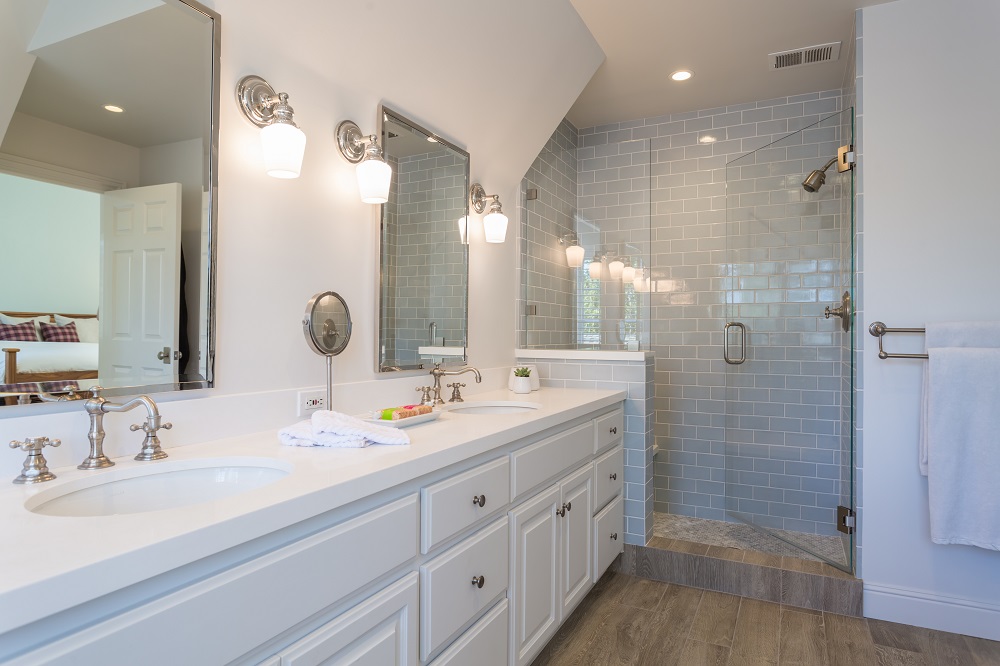Smart and Sustainable In-Home Technology to Reduce Utility Costs
The financial and environmental costs of using utilities add up fast. In many cases – and we’re all guilty of this – we don’t realize how much we’re consuming until the utility bill shows up. We scratch our heads and think, “wow, there’s no way I used 897 kilowatt-hours of electricity this month.” (The average U.S. household uses that much each month and 10,766 kWh per year.)
Fortunately, there are several in-home tech products, like motorized shades, that can save you money on your utility bills and help the environment at the same time.
How Much Electricity Do You Use Around the House?
Each month, your utility bill is calculated based on how many kilowatt-hours are consumed.
So just how far does one kilowatt-hour go?
A kilowatt-hour, which is a measure of electrical energy equivalent to a power consumption of 1,000 watts for one hour, could power ten incandescent 100-watt lightbulbs for an hour. One kwh costs about $0.12, which can add up if you’re leaving lights on in multiple rooms. Having shades that can help you use natural light can save a lot of money. Check out this table, which lists common household appliances and how much energy they use in an average month:
Appliance average kWh per hour used each month and average cost
| Appliance | Appliance Average kWh used each month | Average cost each month |
| Smartphone | .08 kWh | $0.01 |
| Tablet | .9 kWh | $0.11 |
| One LED Lightbulb | 1.2 kWh | $0.14 |
| Big-screen TV | 2.5 kWh | $0.30 |
| Wireless modem and router | 7.5 kWh | $0.90 |
| Gaming System | 8.3 kWh | $1.00 |
| One 60-watt Incandescent Lightbulb | 18.3 kWh | $2.20 |
| Desktop Computer | 25.0 kWh | $3.00 |
| Refrigerator | 29.1 kWh | $3.50 |
| Washer and Dryer | 69.44 kWh | $8.33 |
| Water Heater | 416.7 kWh | $50.00 |
| Heating and cooling | 640.5 kWh | $76.86 |
So does that mean you have to put on a sweater or take a cold shower? Not necessarily. If you know what you’re doing, you can save hundreds of kWh each month by utilizing the latest in-home technology.
Heating and Cooling
- Smart Thermostat: Since heating and cooling are the biggest utility costs in a home (usually), purchasing a smart thermostat can be a wise investment. Since they are one of the most common ways to save money on utilities, most are compatible with Google Home, Echo and other in-house automated assistants. Some have sensors to keep tabs on hot and cold spots in your house, and you can program them to manage the temperatures when you’re at work, on vacation or asleep, so you’re not wasting energy on climate control you don’t need.
- Motorized Shades: Often the most unappreciated but easiest ways to save money on heating and cooling costs is installing motorized shades. Systems like Somfy allow you to set specific times when they should open or close. By scheduling when your shades should adjust, you save money by either letting the sun in to warm up your home or by keeping it out to cool it. This is usually done from an app on your phone regardless of if you are home or not. If you don’t want to go the motorized route, any shade or drape with the right spacing will help slash your heating costs, and Galaxy Draperies can help!
Average Savings: Between $131 and $145 per year
Light Use
- Smart Lights: If you can’t get the light you need from natural sources, smart lights can save you cash through programming, motion detection and remote access. Most operate through an app, which allow you to turn lights off and on while you’re away (which can help with home security!), but that’s not all there is to it. Smart lights are LEDs, which cost significantly less to operate than traditional incandescent lights.
Average Savings: Between $80 and $120 per year
Games, TVs and Other Appliances
- Surge Protectors: Drain appliances, like video game consoles, waste a lot of energy because they’re always on (even when they’re not being used). Conservation-themed surge protectors, like the Belkin Conserve Switch Surge Protector, let you switch things off with a remote, so you can stop certain appliances from wasting energy. Other types, like ThinkEco, cut down consumption when your plugged-in devices are in standby mode.
Average Savings: Between $60 and $80 per year
Laundry
- Energy-efficient washers: Though there aren’t washers that are specified as “smart washers”, certified ENERGY STAR products can definitely be a smart purchase. They save on both energy and water, so you get even more bang for your buck if you pay a water bill. If you wash your clothes in warm (not hot) or cold water, you’ll save even more. Typically, an ENERGY STAR washing machine uses 25 percent less electricity than its non-eco-friendly counterparts do.
Average Savings: Between $75 and $125 per year
Smart Home Security
- Smart Home Security System: While it may not save you money directly, having a smart home security system can save you money on home insurance. Much akin to airbags in a car, insurance companies know that you’re taking steps to help mitigate risk. The latest-and-greatest security systems monitor your home’s electricity and wiring, and record activity that goes on inside and outside your house. Sometimes you can even get a claims-free credit, which offers you a discount if you haven’t made a claim in the past.
Average Savings: Up to 20% of your normal bill
What Smart Tech Do You Depend On?
Utility bills can get expensive, so savvy homeowners are using all kinds of smart tech to save cash, while also helping the environment. We’d love to hear about the technology you can’t live without, so share your story in the comments!
Original article from Redfin



